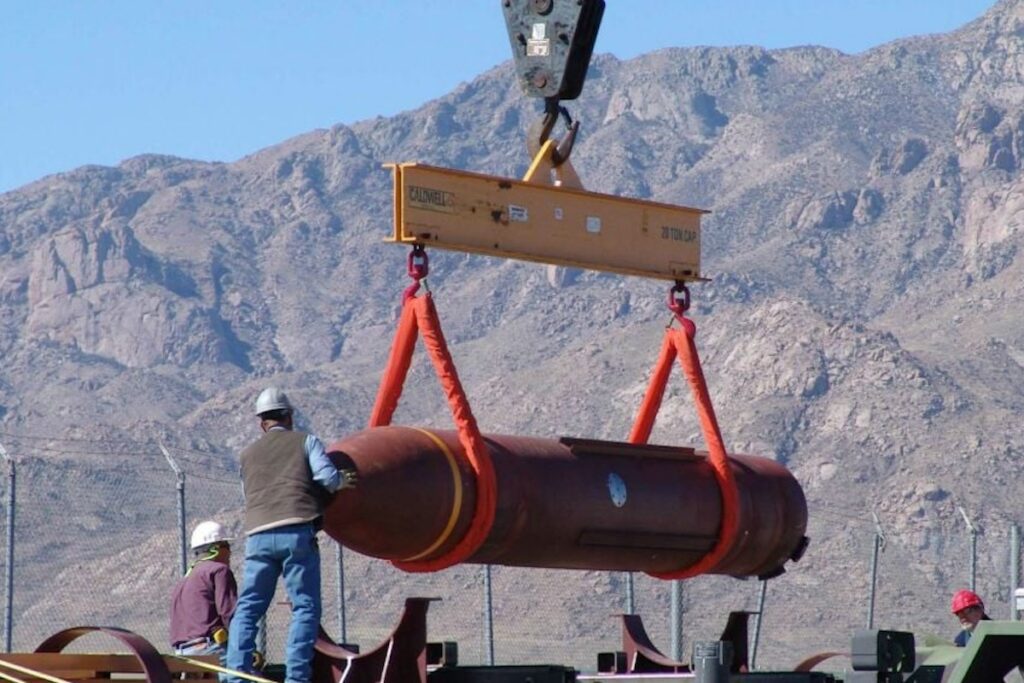As Israel escalates its confrontation with Iran, Donald Trump faces a defining foreign policy test. The choice before him is not between diplomacy and war. Diplomacy has largely been exhausted; war, in some form, is already underway.
The real question is more consequential and more concrete: should the United States supply Israel with its most formidable non-nuclear weapon—the 30,000-pound bunker buster?
These Massive Ordnance Penetrators (MOPs) are designed for a singular purpose: to destroy deeply fortified targets, such as Iran’s hardened nuclear facilities. Fordow, Iran’s mountain-buried enrichment facility, was built to survive conventional airstrikes.
Only the MOP can breach it. For years, US policy rested on a mix of sanctions and diplomacy, backed by the unspoken threat of these weapons. That deterrent is now being tested.
Israel, having demonstrated its military capabilities in Gaza and against Hezbollah, is now striking Iranian nuclear scientists and sites and senior military commanders. There is growing confidence in Jerusalem that it can push further, potentially taking out Iran’s political leadership.
Trump himself recently claimed to have vetoed an Israeli request to target Supreme Leader Ayatollah Ali Khamenei. From Israel’s perspective, Iran is advancing too close to nuclear breakout, and the margin for delay is vanishing. Yet Israel still lacks the means to destroy Iran’s most hardened assets. Only the US can fill that gap—and must now decide whether to do so.
The strategic case for such collaboration is clear. If the US wishes to avoid a protracted regional war, it must consider helping Israel strike preemptively—precisely and decisively—before Iran can entrench itself behind proxies or lash out at other US allies.
Whether through direct transfers of MOPs or joint US–Israeli operations, Washington’s willingness to act could send an unmistakable message: the free world is willing to act to prevent Iran from becoming a nuclear-armed power. Trump’s instincts may align with this moment. No modern US president has embraced Israel’s security priorities more overtly.
From relocating the US embassy to Jerusalem to recognizing Israeli sovereignty over the Golan Heights, Trump has built deep credibility with Israeli leadership. That credibility now grants him a narrow but meaningful opportunity to lead a coalition not of occupation but deterrence.
This confrontation, however, is not solely Trump’s to own. Netanyahu has repeatedly demonstrated an ability to bring the US into alignment with Israel’s regional posture. In Gaza, the Biden administration maintained rhetorical distance while continuing to supply weapons. The current dilemma is a logical extension: will passive support become active cooperation?
There is also a psychological layer to this moment. The memory of President Obama’s unenforced “red line” in Syria continues to haunt US credibility. When America declined to act after Assad’s use of chemical weapons, adversaries took note.
Iran, Russia and North Korea learned a critical lesson: US threats could prove hollow. That precedent now shapes this moment. Will the next move be guided by strength, by strategy, or by ego—or, as history often shows, a combustible mix of all three?
Diplomacy remains relevant, but it is increasingly unclear whether it can contain Tehran’s ambitions. The US is left debating whether treaties can hold Iran in check or if MOPs are the only remaining lever.
One uncomfortable truth looms: the trajectory and intensity of this conflict—and perhaps the future of nuclear non-proliferation in the Middle East—will depend largely on whether Washington chooses to act. Both allies and adversaries are watching and adjusting their calculations accordingly.
Critics will warn of escalation. Transferring MOPs or employing them directly risks igniting open war, destabilizing oil markets and fueling anti-American sentiment. Yet these risks are not new.
They have existed since Iran began inching toward the nuclear threshold. What is untenable is the illusion that inaction preserves peace. The current path is one of slow, steady escalation with no clear off-ramp.
By enabling Israel to target Iran’s nuclear infrastructure with surgical precision, the US may not be choosing the most aggressive course, but the least dangerous one. The only thing more dangerous than using the bunker buster now may be failing to use it when the time calls for it.
This is not about boots on the ground. It’s about recognizing a geopolitical moment that demands clarity, not caution. Iran has built its nuclear program under mountains for a reason.
The question now is whether the United States is prepared (and believes it is right) to help Israel reach beneath them. The answer may be as consequential as any the US has made in the nuclear age.
Kurt Davis Jr is a Millennium Fellow at the Atlantic Council and a member of the Council on Foreign Relations. He is also an advisor to private, public and state-owned companies and their boards as well as creditors across the globe on a range of transactions, including debt and equity financings, M&A and special situations (including financial restructurings). He can be reached at kurt.davis.jr@gmail.com.

